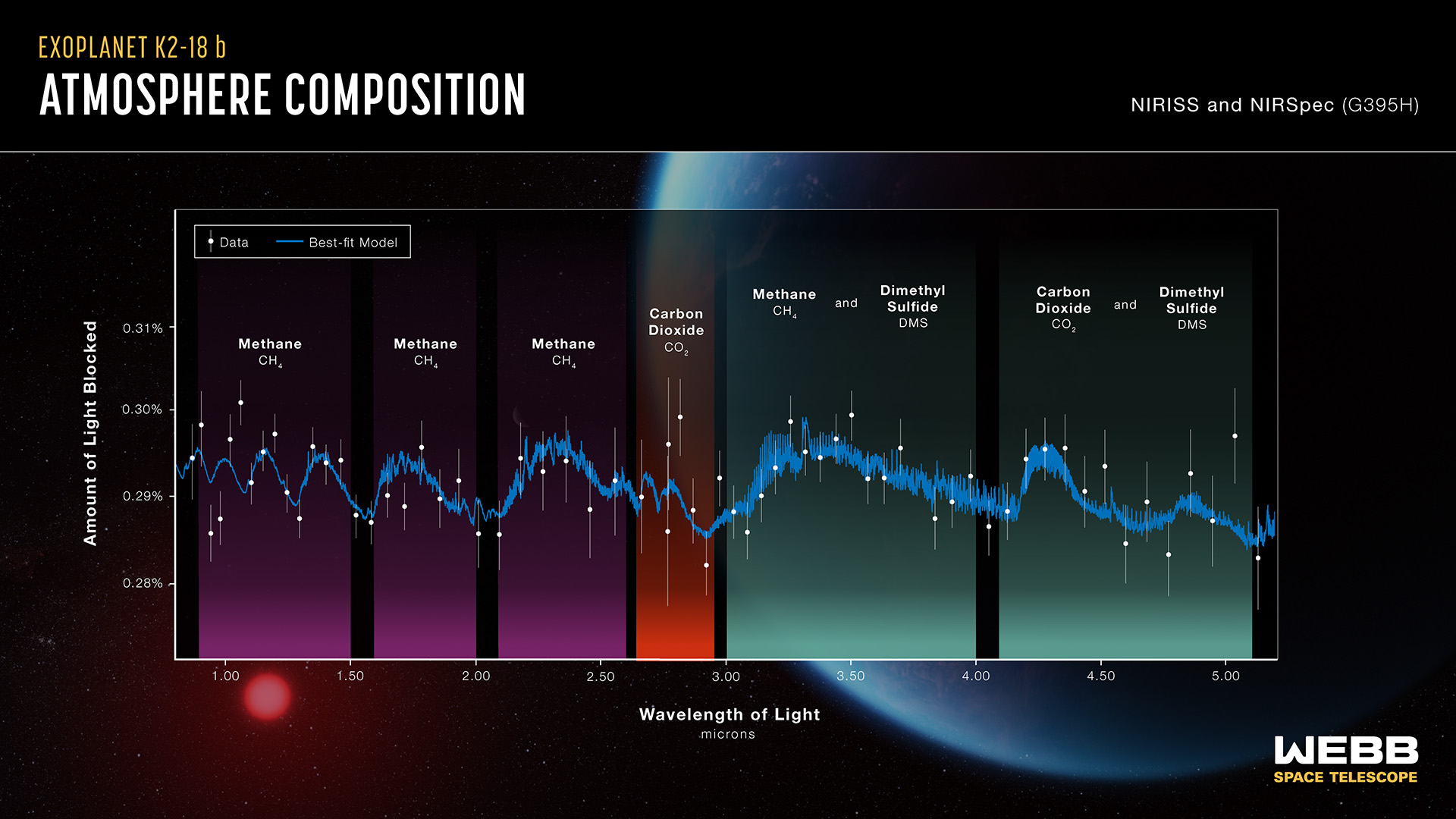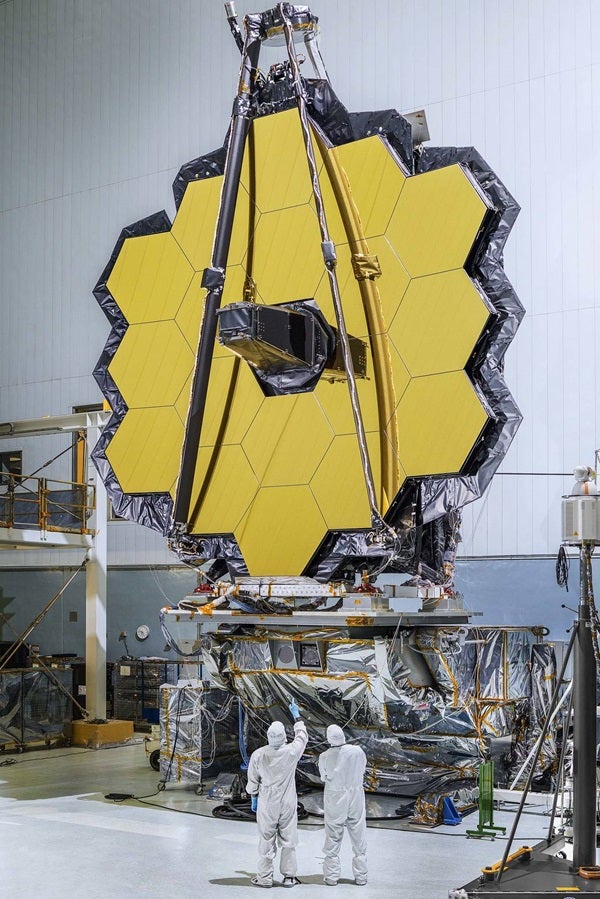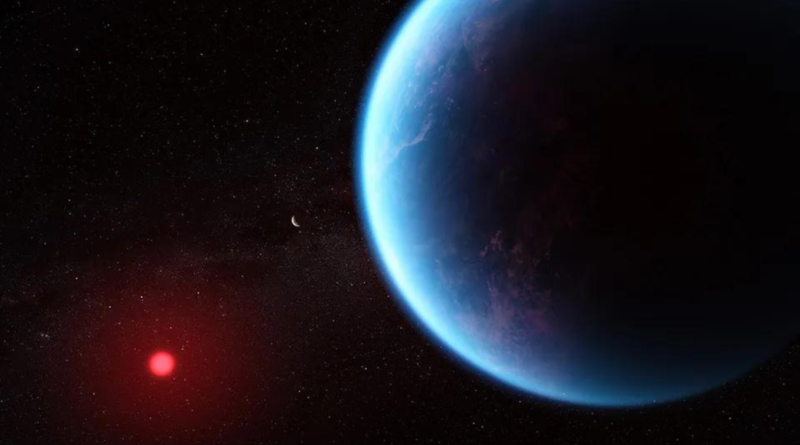Alien Atmospheres Decoded: Can We Breathe There? Scientists Discover Shocking Details!
Introduction: The Quest for Life Beyond Earth
Scientific searches for otherworldly life have consumed human brains and spirits for eons. By employing state-of-the-art technologies, researchers now have the capacity to investigate outer space leading to the discovery of numerous exoplanets some of which are probably habitable. James Webb Space Telescope (JWST) has provided a new view on this matter enabling scientists to study distant world’s atmospheres in a detailed way. Recently, JWST made a sensational finding about K2-18 b – an interesting sub-Neptune planet.
The Discovery: James Webb Space Telescope Uncovers K2-18 b’s Atmosphere
K2-18 b is an intriguing exoplanet situated within the Leo constellation at 120 light-years from Earth that gained much attention over the last decade. It falls under the classification of sub-Neptune due to having almost three times bigger radius than that of our home planet but smaller than those in our solar system such as gas giants. As far as studying K2-18 b’s atmosphere is concerned, it will be difficult not to mention how instrumental James Webb Space Telescope has been in this regard since it has revealed much about its composition and whether or not it can support life.

The Findings: Carbon-Bearing Molecules and the Possibility of Life
According to observations made through JWST, carbon-bearing molecules such as methane or carbon dioxide are present in K2-18 b’s atmosphere. These are important because they often result from biological processes on Earth like decaying organic matter or microbial activities. Thus, these findings support one hypothesis; which says that K2-18 b could be a Hycean exoplanet because there is no ammonia detected indicating so much presence of hydrogen around it with water covered surface beneath making them ideal for habitation out there.
What makes these molecules exciting when detected in K2-18 b’s atmosphere is it implies that life may exist in this distant world. Although K2-18 b orbits within the habitable zone of its star, which means that liquid water can potentially be found on its surface because it receives sufficient energy from its host; however, due to its large size it has a Neptune-like interior with a thinner hydrogen-dominated atmosphere and an oceanic exterior. Nevertheless, the ocean could be too hot for habitation or simply to remain liquid.
The Significance: Implications for the Search for Life in the Universe
Detecting carbon-bearing molecules on K2-18 b’s atmosphere will have implications in understanding where else we might find life beyond earth. Historically speaking, researchers have mainly concentrated on smaller rocky worlds around their host stars’ habitable zones. However, larger Hycean worlds such as K2-18 b could facilitate atmospheric studies and hence habitat exploration. This discovery underscores the need to explore different types of habitable environments when searching for signs of extraterrestrial life.
The recent detection of these spectral signatures in K2-18 b’s atmosphere was only possible thanks to James Webb Space Telescope’s unprecedently high sensitivity and extended wavelength range in infrared light. JWST will change our understanding of exoplanet atmospheres and their suitability for life through many more observations planned for this and other exoplanets.

Decoding the Ingredients: What Makes a Breathable Atmosphere?
What is it that makes an atmosphere breathable for us humans? Undeniably, oxygen (O2) is the major component. In our lungs to work properly, we need about 21% oxygen in the atmosphere. However, oxygen alone does not suffice. An overdose of this element which was found on some early earth environments could be dangerous and cause uncontrollable fires.
Another key ingredient is pressure. For our bodies to function correctly, atmospheric pressure must fall within a certain range. With too little pressure like that on Mars, your blood would boil!
Finally, we also need protection from space’s harsh radiation. That is where nitrogen (N2) comes into play. Nitrogen is an inert gas that acts as a shield soaking up harmful UV radiation.
Breathe Easy? Shocking Discoveries About Alien Atmospheres:
The JWST has already yielded some mind-boggling results. Here are a few highlights:
A Super-Earth with Steam: Scientists have discovered another exoplanet with steam clouds filled by water vapor surrounding LHS 1140b.Though this “water world” may not be suitable for human habitation, it does show that there are many different atmospheres out there.
A Rocky World with Potential: The analysis of the atmosphere surrounding K2-18b indicated its richness in water vapor and gives hints about possible presence of O2 here.More research is required to confirm if this rocky world is potentially habitable.
A Shocking Surprise: Although WASP-39b was known to have been a giant exoplanet whose atmosphere was expected to be hot and composed of exotic components; the recent discovery using JWST data has shown existence of vaporous water-containing clouds which challenges the understanding atmospheric dynamics in such extreme worlds.
So, Can We Breathe There Yet? The Road Ahead
These discoveries are truly groundbreaking, but hold on to your spacesuits! While some exoplanets show promising signs, we haven’t found a perfect “Earth 2.0” with a breathable atmosphere just yet. There are still several hurdles to overcome:
- Complexity Matters: Planetary atmospheres are complex systems and their composition may not always guarantee habitable conditions on them. The role of other gases, the temperature variation or the existence of an ozone layer that offers protection is critical.
- Distance is a Barrier: Even if we find what looks like a perfect candidate, the exoplanets are so far away that physical exploration would be difficult if not impossible. As it stands now, we can only study their atmospheres remotely using our current technology and sending crewed missions to potentially habitable worlds remains science fiction.
- The Search Continues: With its mission having just begun, the universe is vast enough for JWST to keep searching. With more observations and even more powerful telescopes in future, there should be many more surprises revealed by JWST in years ahead.

Beyond Breathing: The Broader Implications
The search for breathable atmospheres is just one aspect of the exciting field of astrobiology – the study of life beyond Earth. What if we can’t find another earth-like planet with abundant oxygen? However planets that have water vapor in their atmosphere , contain organic molecules or have suitable pressure ranges could still be possible places where life forms as yet unknown to us dwell.The possibility is staggering though these “exolife” forms might look significantly different from terrestrial life system itself as it exists today.
When we look for alien atmospheres, it’s not just another way to find a new home for humankind, but an exploration for discovering more about the world and our place in it. Each new finding is a step forward towards answering one of the oldest queries of man “Are we alone?” no matter if it does not instantly end up as a breathable paradise on earth. In other words, this pursuit aims at stretching scientific frontiers while unraveling nature’s many worlds that lie out there.
Get Involved: Be Part of the Search!
The search for alien atmospheres is a cooperative effort—you, too, can join in. Here are a few ideas:
- Citizen Science Projects: There are numerous online platforms on which you can work to contribute to fundamental scientific research by analyzing data from telescopes. You can help to find patterns in exoplanet atmospheres.
- Space Advocacy: Support space agencies and organizations expanding the horizons of space exploration and developing the technology necessary to study alien atmospheres in more detail.
- Spread the Word: Discuss the latest findings in astrobiology with friends, family, or whoever takes an interest. Passing on your excitement may ignite public interest in space exploration. It is full of promise.
As we continue to decode the secrets held within alien atmospheres, we may find the answer to the ultimate question: Can we breathe there? Progress can be hastened a bit faster with a research and collaboration effort to find a new place in the cosmos to call home, or at least take a deep breath in.

I thoroughly enjoyed reading this because I’ve Always had a fascinating interest and curious mind about our existence and life beyond earth Really informative